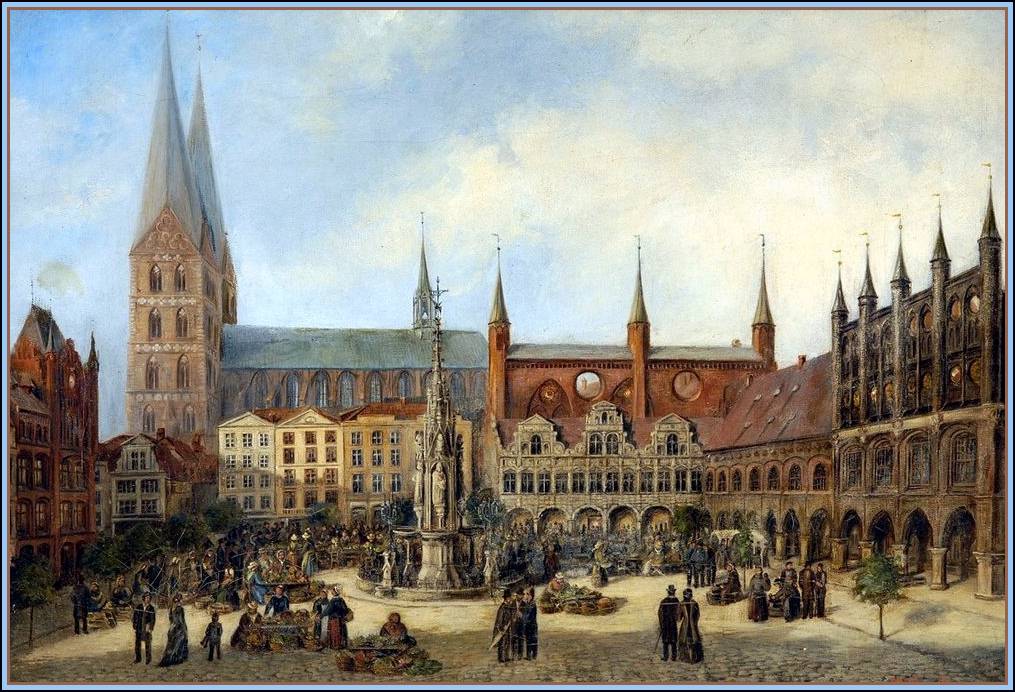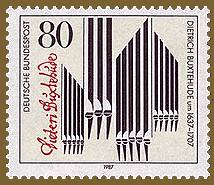 |
|
Diderik BUXTEHUDE
Abendmusik
|
1. Organ:
2. Cantata:
Organ Selection 4. Prelude, Fugue & Chaconne in C Major, BuxWV 137 5. Ciacona in e-minor, BuxWV 160
6. Chorale Motet: Mit Fried und Freud ich fahr dahin
Organ Selection
10. Cantata: Befiehl dem Engel, dass er komm,
Organ Selection
|
|
In October 1705, the Arnstadt Church Council granted their new organist, 20-year-old Johann Sebastian Bach leave to visit... not Rome like his contemporary Handel, but the north-German city of Lübeck to hear the great organist, Dieterich Buxtehude.
This was to involve Bach in a journey of some 400 miles, part by river boat, part perhaps by thumbing a lift from a passing cart, but much of the journey necessarily on foot. But the reward was clearly worth the effort for the young Bach, who took every opportunity to hear Buxtehude play, and to attend the famous evening concerts of choral and organ music known as the Abendmusiken, held in the Marienkirche where Buxtehude was organist. Bach was so fascinated by these concerts, and by his discussions on the arts with the great master, that he remained in Lübeck over Christmas until the following February, bringing back with him copies of more than half of the master's known works. The most striking feature of Buxtehude's "free" organ compositions, that is, his non-sacred works, is their improvisatory, almost undisciplined nature as illustrated most clearly in his Toccatas, Preludes and Fugues, with their short dramatic episodes full of light and shade, surprise turns of harmony and format, as a seemingly gentle chaconne contrasts with a flash of brilliant episodic toccata. Perhaps Bach's seven harpsichord toccatas most nearly reflect those of Buxtehude (see BACH 726). On this present disc we attempt to re-create the spirit of Buxtehude's Abendmusiken in a programme which alternates choral motets or cantatas with organ chorale variations, chaconnes and dramatic toccatas. The organ works were recorded on the historic organs in St Jakobi, Hamburg (original 1512 organ rebuilt Schnitger 1693) and Steinkirchen (1581 and earlier pipework, rebuilt Schnitger 1685-7). The Fugue in C holds an unusual surprise in the form of a catchy syncopated theme! Compared to the cantatas of J.S. Bach, those of Diderik Buxtehude are less complex, more quiet and introspective. They are refreshing in their simplicity, tranquil in their transparent clarity. Buxtehude's setting of the Lutheran chorale Mit Fried und Freud ich fahr' dahin - "With peace and joy I enter therein", is the least complicated, and yet one of the most beautiful. In the final verse, "He is the bright and holy light and succor to the heathen, who know Thee not," the chorale melody is sung in its inversion. Total time: 72:34 |
